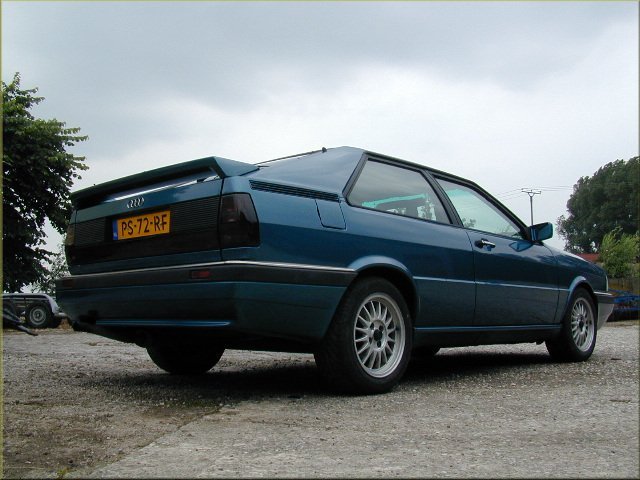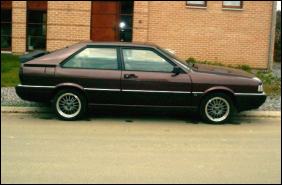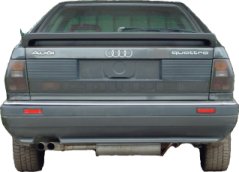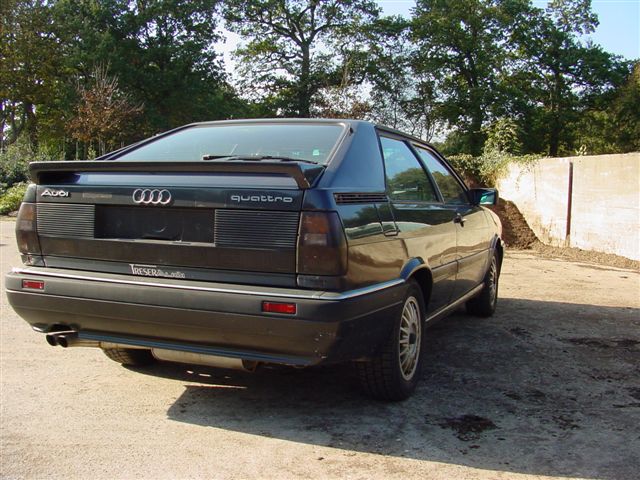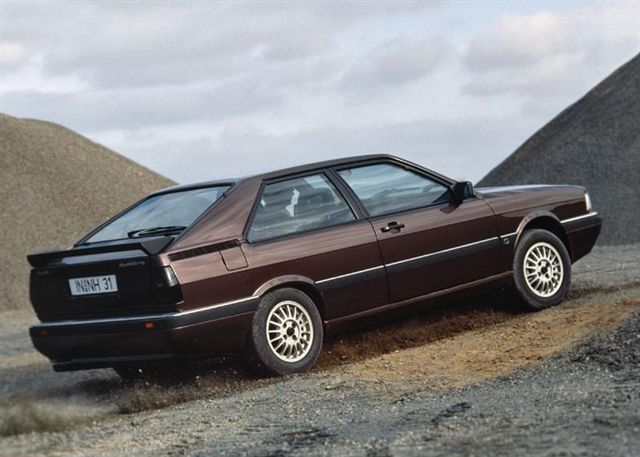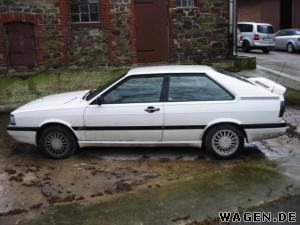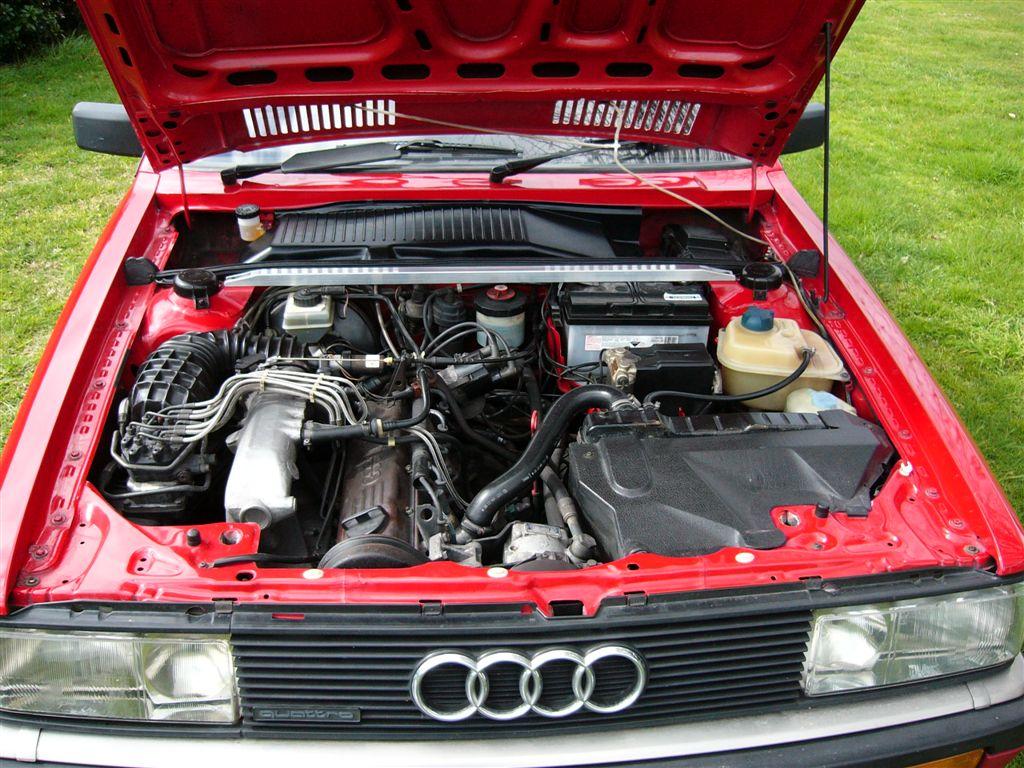
B4 strut brace installed in 1987 B2 Coupe quattro
A strut brace ties the front strut towers together, which increases the torsional rigidity of the chassis (resistance to twisting) at a point where there is quite a gap in the chassis structure. Torsional rigidity is important because the twisting of the chassis under cornering changes the wheel alignment when the chassis is under stress which reduces ultimate grip and increases tyre wear. Cars with uprated, lowered suspension transmit more forces into the car’s structure (over bumps etc), so a strut brace will ensure the suspension can perform as it should while reducing rattles and scuttle shake.
The B2 Type 85 Coupe quattro chassis design was designed in the late 1970s and the 1980 – 88 B2 Coupe shell is not as rigid as cars produced nowadays. The hand-assembled 1980-91 Ur-quattro chassis (also a B2 Type 85 shell) has thicker sills, extra welding and gusset pieces which make it more rigid than other B2 Coupe variants. The later 1991-95 B4 Audi 80 series shared many under the skin components with the earlier B2 cars despite their different external appearance. The later 80 V6, Cabriolet, S2 and RS2 used a factory strut brace between the front suspension towers for added stiffness, even though the later chassis was more rigid to start with.
As the floorpan of the later B3 (1986 – 91) and B4 (1992 – 96) cars is similar to that of the B2, the factory strut brace intended for the B4 series will fit the earlier cars. The factory brackets need to be carefully welded to the strut towers, rustproofed and painted body colour. The factory cross-bar can be used, but it is expensive, made of heavy steel, and has slotted bolt holes that depend entirely on the tightness of the four bolts for the desired effect. A better, cheaper and more elegant solution is to make a cross-bar with round bolt holes from high tensile alloy square section tube. Installation into the 1984 – 88 Coupe quattro and 1984 – 86 90 quattro with the 5-cylinder 2226cc ‘KV’ engine requires moving the power steering fluid reservoir downwards by 30mm for clearance and slight re-positioning of the fuel lines – other models and those with different engines might have other components that need repositioning. Strut tower caps and nuts from the dealer are finishing touches and lend a factory appearance to the job. Ensure careful measurements are made prior to fitting, as under-bonnet clearance is minimal. The effect is greater chassis rigidity which manifests itself in better steering precision on turn-in, and a firmer foundation for those suspension enhancements.
The assembly consists of two brackets welded to the strut towers with a lateral bar attached to them by means of four bolts (two to each bracket), which is a good design in terms of rigidity – other designs with one horizontal bolt at each end are less effective as they might allow the bracket and bar to pivot in relation to each other. There are early and late versions of the S2 bar; the difference being the early bar is round in cross section with flattened ends, the late version is made of 20mm square section steel tube with a 2mm wall thickness, either with squared ends or cut at an angle. The angle-cut version does not require end caps and is probably an even later version
It is possible to re-route the bar to clear the battery, brake and power steering reservoirs, which would negate the need to unbolt the crossbar when the battery needs attention or removal, or to interfere with any reservoirs, but it will cost a lot more in terms of labour to fabricate the bar if you’re not doing it yourself. Other things to consider is that a bar with bends in it is not as stiff as a straight one and additional attention will need to be given to the clearance between the bar and the underside of the bonnet. For these reasons the recommended solution is a straight bar across the top of the battery, as found in the early S2. A 6mm Allen key should be carried in the car’s tool kit in case battery removal is required.
S2 Strut Brace Parts Numbers:
| Description |
Quantity |
Part Number |
| Bar (Late square version) |
1 |
8A0 805 645 A |
| Left Braket |
1 |
8A0 805 635 B |
| Right Bracket |
1 |
8A0 805 636 B |
| Bar end Caps |
2 |
8A0 805 963 |
| New Strut tower covers |
2 |
893 412 375 A |
| Plastic speed nuts |
4 |
171 201 969 |
Effects
In terms of driving a car with the brace fitted, the overall effect is quite subtle, but it is there nonetheless. It is not normally apparent when driving gently on smooth roads. The most obvious is that during spirited cornering the front of the car ‘bites’ more readily as lock is applied – the steering acts more quickly and the car changes direction with less effort. There is a feeling of being able to lean on the grip more. The effect of this initially is that the car will tend to go to the inside of the corner as the driver instinctively compensates for the give in the chassis that is no longer there. Before and after comparisons are easy due to the ability to unbolt the cross bar in a minute or so.
For other comments and experiences on strut brace installation into B2 and B3 Audis, see Huw Powell’s excellent site
Acknowledgements: Michael Brown
|

